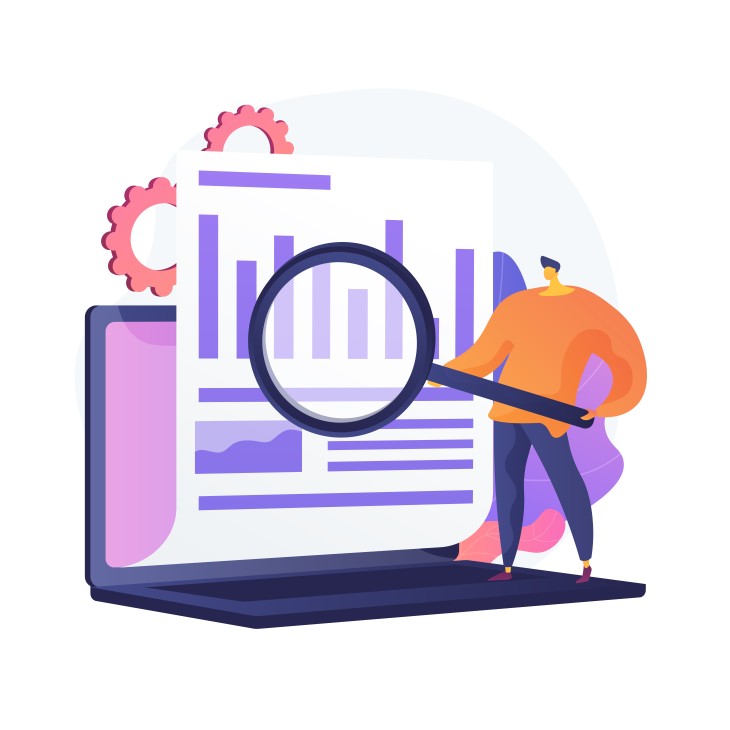


April 29, 2024
Eyes4Research
In the market research space, the motivations that drive research panelists and survey participants are as diverse as the individuals themselves. From monetary incentives to underlying satisfaction, understanding these motivations is essential for deciphering the intricacies of participant engagement and ensuring the integrity of research outcomes.
Let’s explore the factors that influence participants’ motivations, along with real-world examples of the impact of those motivations on data quality and research efficacy.
What is the Value of Consumer Opinions?
Consider a scenario where a leading cosmetics company is seeking insights into consumer preferences for skincare products. Through online surveys and focus groups, the company collects feedback from panelists regarding product efficacy, package design, and pricing.
These insights help inform product development strategies and marketing campaigns, allowing the company to cater directly to the evolving needs and desires of its target audience, an opportunity they might have left on the table, had they not sought insights from their customers.
Recognizing the Value of Participant’s Time
Imagine an online retailer conducting a satisfaction survey among recent customers to get a read on their individual shopping experiences over the last year. Sweetening the deal by offering participants exclusive discounts or entry into a prize draw incentivizes participation and allows the brand to show appreciation for their customers’ time and feedback. This approach creates a sense of reciprocity and encourages continued engagement with the brand.
The Role of Incentives
A telecommunications company launches a customer feedback program to chain insights on service quality and customer satisfaction. In addition to offering monetary rewards for completing surveys, they implement a tiered incentive system where participants earn bonus points for providing detailed feedback or participating in follow-up interviews. This incentivizes active participation and enriches the depth of insights gained from the research.
Why Participants’ Understanding Survey Design Is Important
When seasoned participants understand survey design, they can navigate questions more easily, leading to increased data quality. For example– a market research firm studies consumer attitudes towards sustainable fashion. They carefully design survey questions to capture nuanced opinions on topics such as eco-friendly materials, ethical manufacturing practices, and pricing considerations.
By utilizing clear language in their questions, balancing response options, and maintaining a logical flow throughout the survey, the research firm keeps a lid on participant response bias and ensures a higher level of data quality overall.
What Motivates Survey Participants?
While some regular survey participants might do it for a few extra dollars, others place a higher premium on making their opinions known to a brand, expecting that their insights will result in a higher-quality product or service.
For example: a healthcare organization surveys its patients to assess satisfaction with telemedicine services. While monetary incentives may attract some participants, others are motivated by the desire to improve healthcare access or contribute to the advancement of remote healthcare delivery in their community. With the healthcare organization acknowledging and appealing to diverse motivations in its research, it establishes a sense of purpose and collective impact among the participants, regardless of their ultimate motivation.
How Brands Can Cultivate Engagement and Long-Term Relationships with Survey Participants
A software company maintains a dedicated community of beta testers who provide feedback on new product features and user experience enhancements. Through regular communication, exclusive previews, and opportunities to shape product development roadmaps, the company has encouraged community and provided a space for collaboration among the beta testers.
This sustained engagement yields valuable insights and cultivates brand loyalty over the long term, as the participants feel they have played a part in developing new products and features.
In the changing landscape of market research, participants’ motivations are influenced by a complex mix of factors, ranging from financial incentives to individual values and impulses to help brands ‘do better’.
Researchers can encourage meaningful engagement, enhance data quality, and drive data-informed decision-making by understanding and catering to these motivations. Custom online panels, such as the ones created and managed by Eyes4Research, give brands an efficient, cost-effective method of collecting data from a tailored and vetted audience.
By following the real-world examples given above and implementing strategic approaches like custom online panels, the path to unlocking the full potential of consumer insights becomes clear, paving the way for brands to more exciting innovation and growth in an increasingly competitive marketplace.
Online panels are powerful tools that provide a more affordable way for companies to gather valuable data to determine the value of their brand’s product or service. Eyes4Research has everything your company needs to collect high-quality insights from consumers. Our panels are comprised of B2B, B2C, and specialty audiences ready to participate in your next research project. Learn more about our online panels here.

April 25, 2024
Eyes4Research
Alcohol consumption remains a big business. Beer, cider, wine, and spirit products grew over seven percent in volume across relevant global markets in 2022. According to Statista, the revenue in the alcoholic drinks market is estimated to reach $196.6 billion this year.
However, when it comes to market research, knowing what non-alcoholic drinks are bought can be as important as alcohol drinking data – especially when it comes to consumption trends at adult venues like bars and live events. An example is Red Bull, which disrupted the alcohol and spirit industry when it arrived in the West in the late 1990s (then was accepted and even assimilated into nightlife culture).
Are you ready for mocktails, another possible disruptor that might be permanent? Market researchers should be interested, for understanding this new trend might help understand overall drinking trends in a rapidly changing world with unyielding habits from specific key demographics.
What is a Mocktail?
A mocktail is not simply ordering an orange juice or soda at a bar or rock concert. The name says it all: A non-alcoholic that “mocks” alcoholic drinks by keeping the taste, bite, and even sensory experience of an alcoholic beverage without the effects. This beverage class mimics the appearance and taste of an alcoholic cocktail. They are typically crafted by mixing fruit juices, syrups, herbs, and other non-alcoholic ingredients.
Here are some examples of mocktails:
In essence, mocktail drinkers get a healthy beverage paired with the exotic and even transcendent feel of an alcoholic beverage. They remain hydrated and energized while navigating the dance floor or madly visiting booths at an outdoor festival.
Clubs and other venues are already paying attention to the mocktail demand, with even non-alcoholic breweries seeing an explosion in revenue. Alcohol sales are healthy, but non-alcoholic sales are no slouch. This year, the revenue generated in the non-alcoholic drinks market is projected to reach $1.45 trillion in the US alone. Non-alcoholic adult beverage sales rose 33 percent this year, accounting for a mammoth $331 million. Online, the number was even higher, where non-alcoholic/low-alcohol sales spiked 315 percent!
Sober business is booming. “Thirty percent of people who are of drinking age do not drink alcohol,” said Tracy Stuckrath, president/chief connecting officer of Thrive! Meetings and Events
But what is driving this trend? Or should we ask “who” is driving this trend?
Alcohol Drinking Habits with Younger Generations.
Health trends come and go, but the reality is that two generations are steering the popularity of mocktails and non-alcoholic drinks: Millennials and Zoomers. A 2018 Berenberg Research report found that Millennials consume less alcohol than Gen Xers and Baby Boomers.
This trend is even more acute with Zoomer (or Gen Z): 66 percent of Gen Z consumers are actively trying to drink less alcohol. Stuckrath agrees that the departure from drinking is fueled by the health fixation of Millennials and Gen Z. Still, others have suggested that the two generations also worry that embarrassing alcohol-related behavior can be exposed on the internet and social media.
Beyond entertainment venues, beer and spirit companies should pay heed and perhaps even make a TikTok about it. Zoomers comprise 40 percent of American consumers and wield an astonishing clout for buying ($143 billion). And they are increasingly backing movements like “Dry January” or “Sober Curious,” whether it’s to live healthier or not appear disheveled and babbling on a viral Snapchat post.
The hospitality industry is paying attention to Millennial and Zoomer drinking habits, ramping up their mocktail offerings. A perfect example is Marriott Properties, which has, across the board, increased its non-alcoholic offerings at several of its bars and restaurants – like offering its Blueberry Bliss, a combination of muddled blueberries, tropical juices, and coconut milk.
You Know the “P” Word Had to be Mentioned
Will this mocktail/nondrinking trend continue? Will alcoholic retailers pivot to satisfy demand as in the past, like producing their own energy drinks to compete with Red Bull or manufacturing bottled water to stay hip with the exotic water craze that continues even today?
That’s hard to tell because we’re still somewhat in the pandemic fog. Why is this important? During the lockdowns, excessive drinking rose by 21 percent. Regular drinking also increased (23 percent more) while people stayed home, and alcohol stores remained “essential businesses.” However, alcohol gradually became connected to adverse mental health. Plus, the rise in alcohol-related liver disease and other disorders was quickly blamed on drinking decisions during the latter parts of the pandemic.
Thus, it’s possible that the current mocktail/nondrinking movement could be a reaction to the pandemic. Society is “drying up” as festivals and concerts become places where viruses are an afterthought. The verdict is still out on alcohol and the pandemic, but the younger generations are going for the pause button to some extent.
In addition, drinking trends are not always linear, and disruptions can occur beyond worldwide emergencies. For example, before the pandemic, morning clubbing or morning raves were rising in popularity. These were events centering on attending a nightclub early in the morning, dancing as an exercise, drinking juice/water, and then going to work in an elevated mood.
This form of entertainment/exercise/therapy went the way of the dodo in 2020 as public venues shut down – and it has yet to make a significant comeback. The point is that there was a popular “nondrinking” alternative to social events. Nobody knows if younger generations would have fully adopted morning clubbing and extended it to the nighttime. Now mocktails are becoming a beneficial alternative to traditional alcohol drinking as more embrace healthy living after years of unhealthy seclusion.
Lastly, market researchers should keep an eye on the gradual legalization of cannabis, though definite trends are hard to grasp presently. A 2021 study of Colorado households revealed a 13 percent average monthly decrease in purchases of all alcoholic products combined, paired with a six percent decrease in wine consumption. But it’s still too early to find a clear relationship between cannabis legalization and alcohol sales across all 50 states.
What we do know is that younger adults are seeking healthy and extraneous alternatives to alcohol while hitting the nightlife or ordering online. That’s something that should be studied closely and not mocked.

April 22, 2024
Eyes4Research
Dispelling misconceptions about the role of veterinarians is essential to recognizing their invaluable contributions to animal welfare. Despite common misunderstandings, veterinarians are indeed doctors, tasked with the challenging responsibility of caring for a diverse range of patients, from household pets to exotic species. Their dedication to improving the health and well-being of animals makes them indispensable to the medical community.
Aspiring vets undergo rigorous training, culminating in a Doctor of Veterinary Medicine (DVM) degree. This comprehensive education equips them with the knowledge and skills to diagnose, treat, and prevent illnesses across species, ensuring optimal care for their animal patients.
Understanding the Impact of Veterinarians
Despite their relatively small numbers compared to human healthcare professionals, veterinarians wield significant influence within the pet industry and beyond. Their expertise extends beyond clinical practice to encompass research, education, and advocacy efforts aimed at promoting animal welfare. As trusted authorities on all matters related to animal health, veterinarian play a pivotal role in shaping consumer behavior and driving innovation in pet products and services.
The Multifaceted Responsbilities of Vets
Contrary to popular belief, the responsibilities of veterinarians extend far beyond the confines of their clinics. In addition to provding medical care to their patients, veterinarians serve as educators, researchers, and advocates for animal welfare. Their broad skill set enables them to perform a wide range of tasks, from performing surgeries to prescribing medications, all with the utmost dedication to their patients’ well-being.
The Ripple Effect: Vets’ Influence on the Pet Industry
The influence of veterinarians extends beyond the walls of their clinics, permeating every aspect of the pet industry. Their recommendations carry significant weight among pet owners, influencing purchasing decisions and brand loyalty. By leveraging their expertise and insights, brands can gain a competitive edge in the market and position themselves as leaders in animal health and wellness.
Navigating the Challenges: Overcoming Hurdles in Vet Research
Engaging with veterinarians for research purposes presents unique challenges, including scheduling constraints and competing priorities. However, the insights gleaned from these collbaborations are invaluable fro brands seeking to develop products and services that meet the needs of both pets and their owners.
By establishing a dedicated platform for veterinarian experts, brands can streamline the research process and gain access to the expertise needed to drive innovation and success in the pet industry. When brands respect the expertise of veterinarians and value their input, they can create meaningful partnerships with vets that yield tangible benefits for pets and their owners.
Eyes4Research recognizes the vital role that veterinarians play in the pet industry. Our veterinarian panel allows vets to share their insights, and collaborate with brands on their research initiatives. Joining forces with vets allows brands to gain a deeper understanding of consumer preferenecs, market trends, and emerging opportunities in the pet industry.
Leveraging the voice of veterinary experts is essential for brands seeking to success in the pet industry. Their insights and expertise help brands develops products and services that meet the needs of pets and their owners, driving innovation and growth in this dynamic market.
Partner with Eyes4Research for everything you need to collect high-quality insights from veterinarians. Our panels are made up of B2B, B2C, and specialty audiences ready to participate in your next research project. Learn more about our specialty panels here so that you can make your product the product of choice for veterinarians.

April 8, 2024
Eyes4Research
In the digital age, data is hailed as the new currency. B2C and B2B brands rely on consumer data to drive marketing strategies, personalize experiences, and make informed business decisions. However, concern is growing over the quality of this data, as industry experts have acknowledged a decline.
Imagine this: a frazzled and weary consumer, navigating the digital landscape daily, bombarded with surveys, pop-ups, and requests for feedback. In the pursuit of understanding consumer behavior, seeking data has become a battle, where ironically, the casualties are often the very insights brands are looking for.
Let’s dig deeper into the reasons behind this data quality decline:
As consumers engage with surveys and questionnaires, they do so in a sea of distractions, their focus diluted by constant distractions. Participant distraction and multitasking emerge as detractions, diminishing the quality of the data collected.
In light of these challenges, brands should consider vendors that provide well-managed custom online panels as an option for consumer research. Online panels, such as the ones created and managed by Eyes4Research, are comprised of carefully recruited and engaged participants.
The Benefits of Online Panels for B2C and B2B Brands
Targeted Recruitment: B2C and B2B brands can recruit panelists based on specific demographics, interests, and behaviors, ensuring the data collected is relevant and representative of their target audience.
Ongoing Engagement: By maintaining a community of engaged panelists, brands can gather insights over time, track changes in consumer preferences and behaviors, and build trust and rapport with participants.
Data Validation: The custom online panels created by Eyes4Research enable brands to validate data through surveys, feedback mechanisms, and other studies. This validation process helps identify and rectify inaccuracies, ensuring the integrity and reliability of the data.
Compliance Assurance: By implementing strong consent management and compliance measures, custom online panels ensure that data collection practices adhere to regulatory requirements, limiting the risk of non-compliance and potential fines.
Agile Insights: With access to an engaged panel of respondents, brands can quickly collect feedback and activate marketing campaigns and product offerings in real-time, enhancing agility and responsiveness.
The decline in consumer data quality poses challenges for brands seeking to leverage data-driven insights to drive growth and innovation, However, by embracing custom online panes as a strategic approach to data collection and engagement, brands can overcome these challenges and uncover the full potential of consumer data to fuel their success in the current business landscape.
Online panels are powerful tools that provide a more affordable way for brands to collect valuable data to optimize their marketing strategies. Eyes4Research has everything your company needs to collect high-quality insights from consumers. Our panels are comprised of B2B, B2C, and specialty audiences ready to participate in your next research project. Learn more about our online panels here.